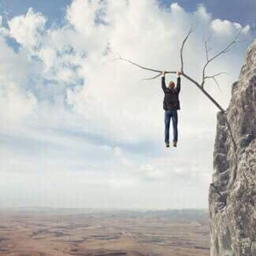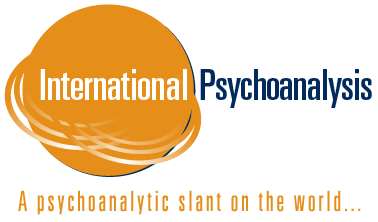
AGORAPHOBIA with Susan Finkelstein and Jamieson Webster Friday, October 29, 2021 12:30-2:30pm Online via Zoom
It was not for a long time that I learned to appreciate the importance of phantasies and unconscious thought about life in the womb. They contain an explanation of the remarkable dread that many people have of being buried alive; and they also afford the deepest unconscious basis for the belief in survival after death, which merely represents a projection into the future of this uncanny life before birth. Moreover, the act of birth is the first experience of anxiety, and thus the source and prototype of the affect of anxiety.” -Freud (1900-1901, S.E. Vol.5, p. 400)
Following our last presentation on claustrophobia, we will now turn to its counterpart, agoraphobia, shifting the valence from the fear of being trapped inside with no way out, to the fear of going outside, and potentially losing not only one’s way, but also one’s mind. Agoraphobic fears point to the wish to be enclosed in a maternal space, where the outside and others represent a threat, an ejection from the womb, the menace of the paternal phallus, and a desire not to be born or separate. Agoraphobic fears protect a patient against the persecutory unconscious fantasy of death wishes towards self and mother in a battle against a hostile takeover. Many psychoanalytic thinkers have turned to agoraphobia including Helene Deutsch, Princess Marie Bonaparte, Bertram Lewin, Henri Rey, John Steiner, Jacques Lacan, elaborating on fears of open space and experiences of vertigo, the fantasy of being buried alive, states of psychic retreat, and the phobic paralysis of representation and verbal exchange. Certainly, the claustro-agoraphobic dilemma has been heightened by the coronavirus pandemic. But it makes its appearance in important works of literature in the 19th century, in Poe and in Proust for example, that may give insight into the current moment. Where is there a space of safety? How does it manifest in psychoanalytic work now, especially in transference fantasies about being kicked out, forced out, denied re-entry, or hurried up? What do we learn from primitive anxieties that arise in psychoanalysis about intercourse, pregnancy, and being born both emotionally and in speech? In addition to attending, we ask participants to watch Roger Corman’s (1961) film “The Pit and the Pendulum” adapted from the tale by Edgar Allen Poe.
Susn N. Finkelstein, LCSW, is a Training and Supervising analyst at the Contemporary Freudian Society and Fellow at IPTAR. She developed Understanding Primitive Mental States, a study group where she teaches The Internal World and Its Objects, The Claustro-agoraphobic Dilemma, Clinical Klein, Bion and Beckett: The Not-I Patient. At the APsaA she co-chairs an annual winter discussion group with Nasir Ilahi on Schizoid Modes-Spatial Time Continuum. She is in private practice in NYC in psychoanalysis, psychotherapy, couples therapy and clinical supervision. She is an associate editor of the International Journal of Psychoanalysis. The Claustro-agoraphobic Dilemma: Fear of Madness, Routledge, publication forthcoming (2022), co-authored with Heinz Weiss.
Dr. Jamieson Webster is a psychoanalyst in private practice in New York City. She is the author of The Life and Death of Psychoanalysis (2011) and Conversion Disorder: Listening to the Body in Psychoanalysis (2018); she also co-wrote, with Simon Critchley, Stay, Illusion! The Hamlet Doctrine (2013). She has written for ArtForum, The Guardian, Playgirl, Spike Art Quarterly The New York Review of Books, and The New York Times. She teaches at the New School for Social Research and supervises doctoral students in clinical psychology at the City University of New York. She is a member of IPTAR and Das Unbehagen
Program Fee: $60 General/$50 CFS Members/$25 Candidates & Students
Register Online: https://contemporaryfreudiansociety.org/event/agoraphobia
Learning objectives:
At the end of this seminar, participants will be able to:
1) Name 3 similarities and differences between claustrophobia and agoraphobia
2) Name 3 types of agoraphobic anxieties
3) Understand the function of agoraphobic anxieties.
Who Should Attend: The instructional level for this activity is advanced. Mental Health Professionals (psychiatrists, psychologists, social workers, licensed professional counselors, e.g. LPs, LCATs, and pastoral counselors) and those with an interest in psychodynamic and psychoanalytic thinking and clinical applications.
Continuing Education Credits:
NY Social Workers: The PTI-CFS is recognized by the NYS Education Department’s State Board for Social Work as an approved provider of continuing education for licensed social workers #0087
NY Psychoanalysts: The PTI-CFS is recognized by the NYS Education Department’s State Board for Mental Health Practitioners as an approved provider of continuing education for licensed psychoanalysts #P-0021.
NY Licensed Psychologists: The PTI-CFS is recognized by the NYS Education Department’s State Board for Psychology as an approved provide of continuing education for Licensed Psychologists #PSY-0017.
DC, MD and VA Psychologists: The CFS is approved by the American Psychological Association to sponsor continuing education for psychologists. The CFS maintains responsibility for this program and its content.
DC, MD and VA Social Workers: The Social Work Boards of the District of Columbia, Maryland and Virginia will grant continuing education credits to social workers attending a program offered by an APA authorized sponsor.
CE credits will only be granted to participants with documented attendance of the entire program and completed online evaluation form. No partial credit will be offered. It is the responsibility of the participants seeking CE credits to comply with these requirements. Upon completion of this program and online evaluation form, participants will be granted 2 CE credits.
Important Disclosure Information:
None of the planners and presenters of this program have any relevant financial relationships to disclose.
